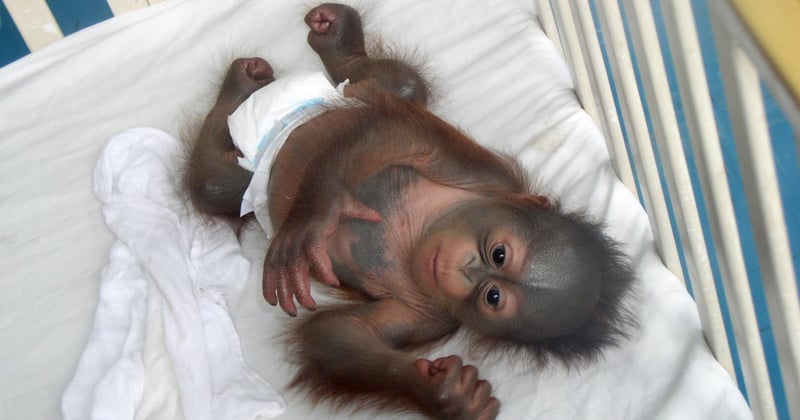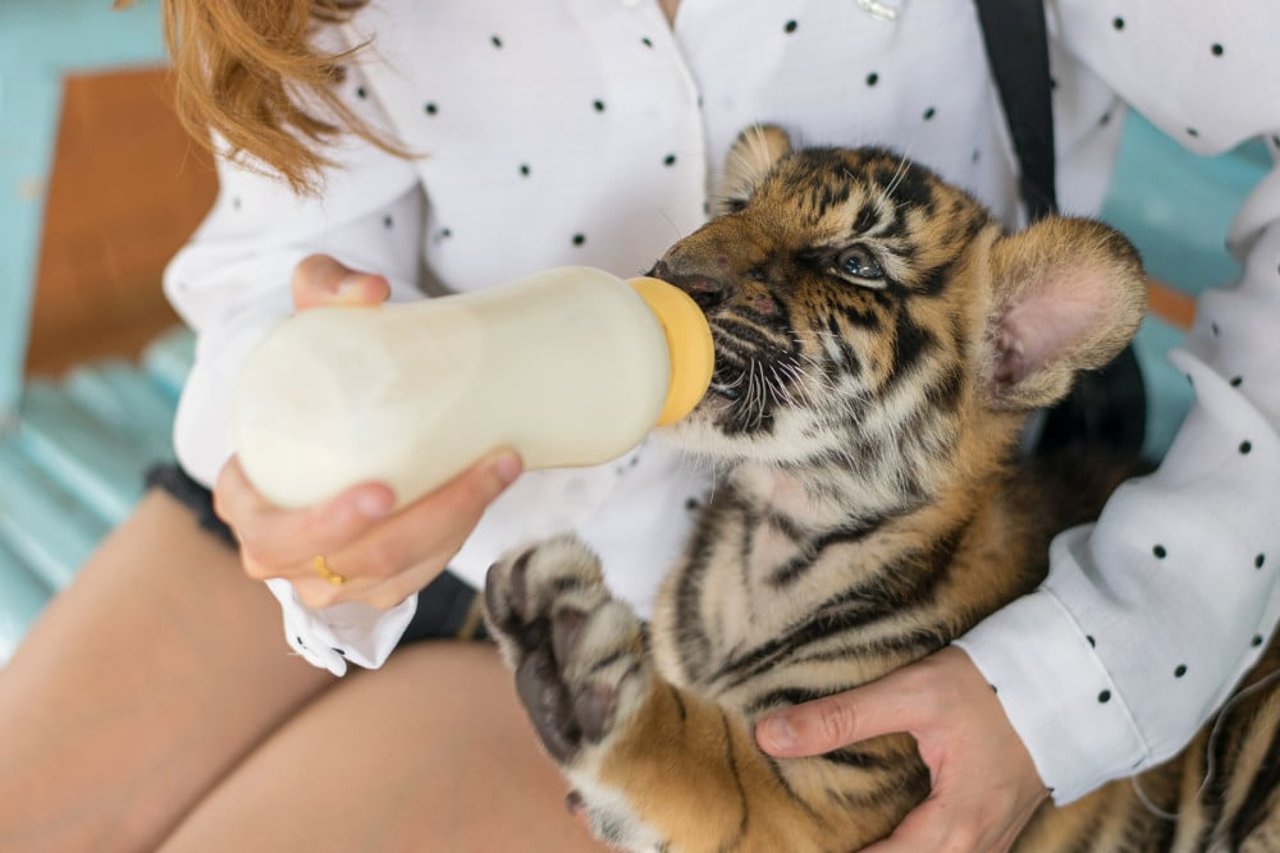
A new report from the Social Media Animal Cruelty Coalition (SMACC) explains how content creators are exploiting wild animals kept as companions on Facebook, YouTube, Instagram, TikTok, and Twitter.
From animals being purposefully injured or killed to wild animals being kept as companions, animal abuse and exploitation are rampant on nearly every social media channel. Not only are the animals in these videos and photos suffering, but they’re driving more people to purchase wild animals—perpetuating the cycle of cruelty.
The Report
The SMACC coalition, which includes World Animal Protection, reviewed more than 800 videos of wild animals being kept as companions on major social media platforms. SMACC documented at least 97 different species, many of which are endangered—including the critically endangered orangutan.
These videos often show wild animals being treated like human children. Monkeys are given bottles and lion cubs wear diapers. These posts get millions of likes and comments from people who think it’s cute or sweet. Many people ask how they can get their own lion or monkey.
In an effort to make money by posting content about captive wild animals, influencers engineer increasingly dangerous and reckless videos. For example, the SMACC report cites a woman who took a tiger cub to a gym as well as crocodiles living with children. Some videos even show animals being sexually abused.
Images like these perpetuate the exploitation of wild animals on social media.
Depictions of Wild Animals Being Kept as Companions Normalize Cruelty
Even if animals are not being visibly harmed or abused for the camera, they are still suffering in the name of clicks and status. When people see these videos, it normalizes the practice of keeping wild animals in human homes. But wild animals can only thrive in their natural habitats. It’s not possible to give wild animals the space and freedom they enjoy in the wild, whether they are a lion a monkey, or a parakeet. For some species, social media could be a death sentence. Demand for these animals is surging and causing a decline in the wild in some species’ populations.
Social Media Platforms Must Remove Exploitative Content and Update Policies
Across the board, social media platforms are refusing to take responsibility. They are failing to remove exploitative content or to establish policies that prevent new content from being posted. While SMACC and other animal protection groups are fighting to change that, you can do your part to protect animals. Check out our tips for what to do when you see animal cruelty on social media.
